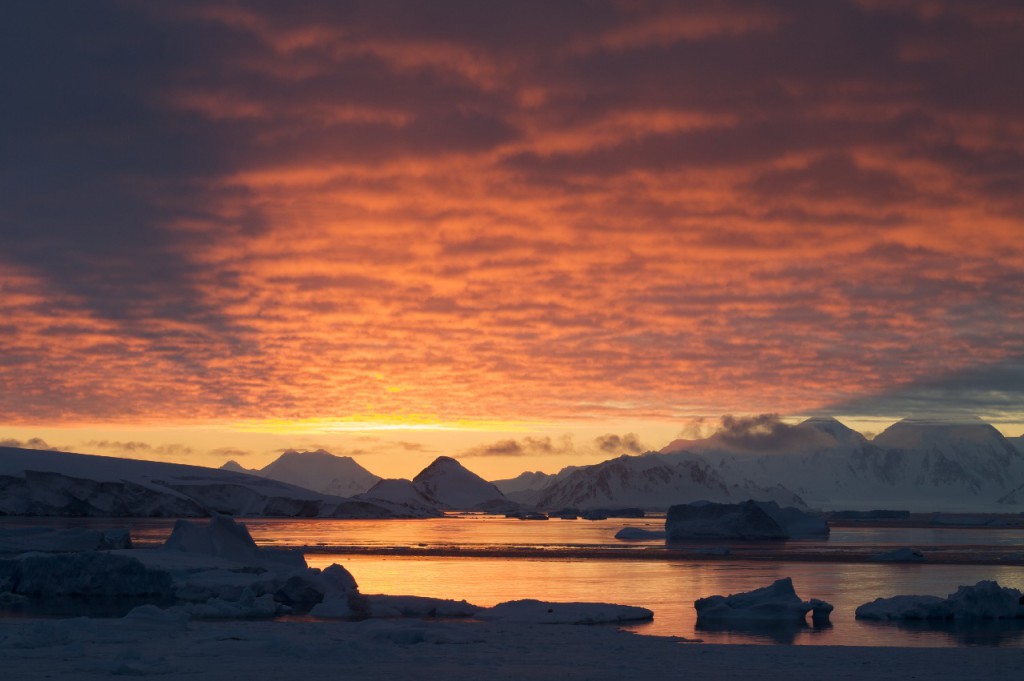15 February, 2010 RRS Ernest Shackleton
 Our Science program kicked into gear quite smoothly and we have had a very high success rate with our buoy retrieval efforts so far.
Our Science program kicked into gear quite smoothly and we have had a very high success rate with our buoy retrieval efforts so far.
Our first task was to attempt to raise several buoys tethered to the sea floor that had been deployed last year with various measuring instruments recording data. These include the ADCP (Accoustic Doppler current profiler) that measures current, CTD’s and temperature probes measuring temp. depth and salinity.
These buoys are released by hydro-acoustic signalling and then float to the surface, hopefully not under an ice floe. The buoys are then dragged on board and the instruments removed and the data recovered. They will be re-deployed prior to us leaving the area. We have so far managed to recover all except one buoy. This project is being conducted by the Norwegian contingent led by Svein Osterhuis and assisted by Lisbeth Havik and Kjiersti Strand.
We are also deploying an instrument directly on to ice floes, this done by David Meldrum of the Scottish Association for Marine Science. His description below.
Sea ice studies on the ES
Sea ice has an important effect on the heat balance of the planet because it reflects solar energy back into space: when there is lots of sea ice the planet will tend to be cooler than when there is no sea ice for this reason alone. At the moment the planet is warming up and sea ice, especially in the summer Arctic, is disappearing. This will accelerate the warming trend. Unfortunately climate models do no accurately describe the changes that we are seeing in the Arctic, and this is affecting the quality of their predictions. The reason that the models are struggling is that we do not properly understand how sea ice grows and decays throughout the year and in different parts of the globe.
The object of our experiment is to improve that understanding and make the models better. We are doing this by deploying a number of sensor chains through small holes in the sea ice. The 120 tiny sensors measure temperature changes in the ice as it grows and decays, as well as in the sea under the ice and in the snow and air above it.
The measurements are sent back as e-mails to our lab in Scotland by tiny satellite transmitters. We hope that the equipment will work for at least one year before it melts out into the Southern Ocean. David Meldrum
Although it is only February the temperatures are already starting to dip a bit and the open water between the floes is freezing overnight. A sure signs that things are already starting to change.
Other than that life on board goes on its merry way. We have a month to go before signing off in the Falklands. As the trip trundles on and weariness sets in most are thinking ahead to some time at home. However there is plenty of work to keep us busy before then.
Once we are finished with the science work we will be heading off to Halley to prepare for the back load and to pick up the last of the summer season personnel after which we will head for Stanley.
In keeping with the Scientific theme of this weeks blog. Some little known Penguin facts:
Did you ever wonder why you never see dead penguins on the ice in Antarctica? Ever wonder where they go? Wonder no more. It is a known fact that the penguin is a very ritualistic bird which lives an extremely ordered and complex life. The penguins have a very strong community bond.
They are very committed to their family and will mate for life. They also maintain a form of compassionate contact with their offspring throughout its life. If a penguin is found dead on the ice surface, other members of the family and social circle have been known to dig holes in the ice, using their vestigial wings and beaks, until the hole is deep enough for the dead bird to be rolled into and buried. The male penguins then gather in a circle around the freshly dug grave and sing
“freeze a jolly good fellow.”
🙂
Words: Pat O’Hara, David Meldrum
Images: Andy Walder, David Meldrum, Pat O’Hara
